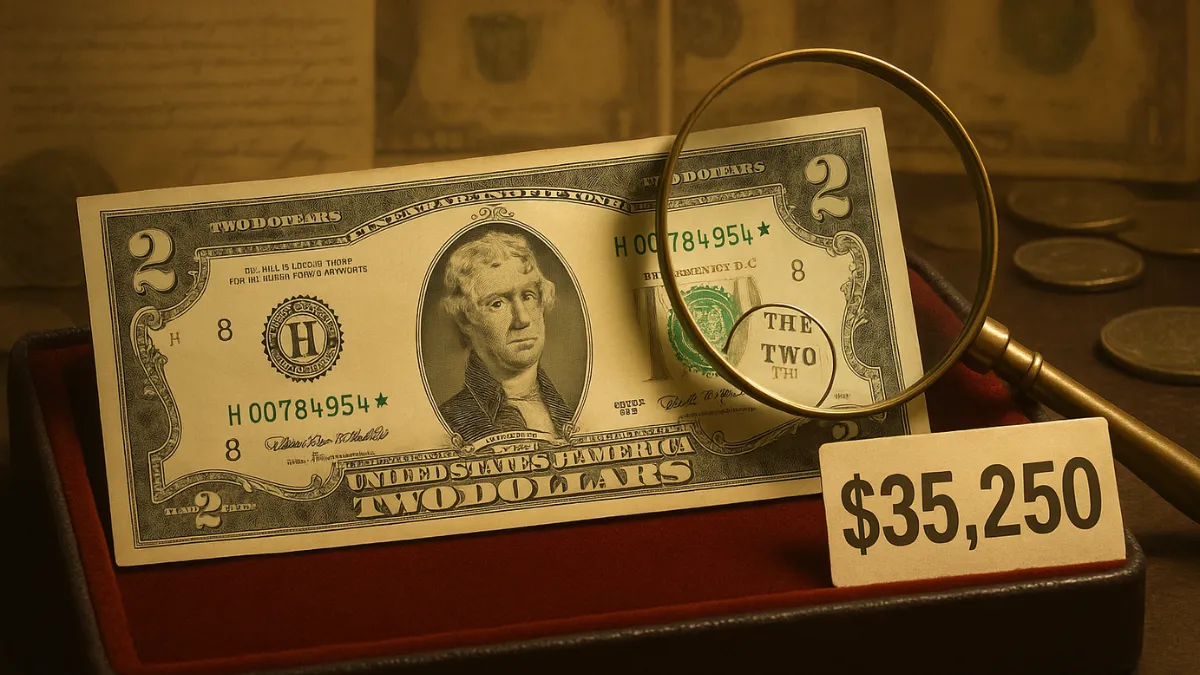Understanding the 1976 $2 Bill: History, Value, and What Makes It Special
The journey of the United States toward becoming an independent nation officially culminated on July 4, 1776, when the Declaration of Independence was signed. Though the struggle for freedom began earlier, this date marked a new beginning for the country as a sovereign entity.
Throughout its history, America has endured countless hardships—ranging from conflicts and financial crises to political upheavals. Each event has played a role in shaping the nation and influencing the wider world.
Every year, Americans celebrate Independence Day with grand displays of patriotism, but 1976 stood out as the nation honored its bicentennial. To mark this historic 200-year milestone, the U.S. government released a specially redesigned $2 bill through the Bureau of Engraving and Printing.
What Makes the 1976 $2 Bill Unique?
While the 1976 $2 bill retained the familiar front image of Thomas Jefferson, a striking transformation occurred on the back. It now features John Trumbull’s renowned painting “The Declaration of Independence,” showing the presentation of the document to Congress.
A fascinating fact about this issue is that the $2 bills weren’t heavily used when released. During the economic recession, people were hesitant to keep bills considered too valuable to stash away casually. The mindset was akin to how unusual it would feel to carry around a $1,000 bill today.
A Little History Behind the 1976 Series
In the early 1970s, a congressional decision led to the development of a special edition $2 bill. It officially debuted on July 5, 1976, in honor of the nation’s 200th birthday. Although dated 1976, no further printings of that particular design occurred until 1995, leaving many of the original notes unused and in excellent shape.
Because they were not widely exchanged, many of these notes remained in almost perfect condition, making them particularly attractive to currency collectors today.
How to Determine if a 1976 $2 Bill Is Worth More Than Its Face Value
If you have a 1976 $2 bill and wonder if it’s worth more than its printed value, collectors generally examine the following characteristics:
Condition (Grade): Bills with no folds, marks, or stains are more sought-after.
Serial Numbers: Low numbers, repeating digits, or unique combinations can add to the bill’s appeal.
Signatures: Notes signed by Arthur Burns and Robert B. Anderson—the final signatures on the 1976 series—are often more valuable.
Federal Reserve District: Each bill is tied to one of 12 Reserve Banks; some districts produced fewer notes, making theirs rarer.
Star Notes: A star replacing a digit in the serial number signifies a replacement note, which is usually scarcer.
Post Office Stamps: Some were marked by local post offices on their release day, enhancing their uniqueness.
How Much Could a 1976 $2 Bill Be Worth?
The 1976 $2 bill’s market value depends on a combination of its rarity, grade, and collector demand. Here’s a general pricing breakdown by category:
Low-Price Bills (Under $20)
These bills are often visibly used but are a great start for beginner collectors.
A visibly worn 1976 $2 note might fetch around $5.
An uncirculated example from Dallas (marked “K”) could bring in about $9.90.
One from Kansas City (“J” district), in crisp shape, may sell for close to $16.50.
Mid-Range Bills ($20–$500)
These notes might be better preserved or include special attributes like star notes or date stamps.
A New York star note could be worth up to $95.
An uncirculated note with a first-day issue postmark might go for around $399.
A Kansas City star note with an autograph can have a value near $257.
High-End Bills ($500–$2,500)
These are highly collectible due to their mint state or exceptional features like star notes, rare serial numbers, or certification.
A pristine note with both a star and an autograph might command around $850.
A bill with the serial number 33 might be listed near $2,000.
Two sequentially numbered notes could easily surpass the $2,000 mark.
Premium Collectibles ($2,500 and Up)
Bills in this bracket are extremely rare and in top condition, often still in sealed packs or featuring ultra-rare serial numbers.
A full 100-note uncirculated bundle has sold for as high as $3,450.
A note with serial number “00000002” once reached a price of $9,400.
A San Francisco bill bearing the serial “00000001” broke the $21,000 mark.
The only private star note with serial number 1 fetched an incredible $35,250.
FAQs
How can I identify a star note?
Look for a star symbol at the end of the serial number. This means it replaced a flawed original note.
Are there any printing errors I should look for?
Yes, errors like misaligned numbers or missing elements can significantly increase a bill’s value.
How can I verify if my bill is authentic?
Authenticity is confirmed through the bill’s paper quality, serial number format, and printing clarity. Advanced features were limited in 1976, so these checks are essential.
Final Thoughts
The 1976 $2 bill goes beyond its face value—it captures a historic American celebration. Whether you’re just beginning or already have a collection, adding this unique note offers both personal and financial rewards.
Affordable examples are perfect for casual collectors, while high-grade or unique specimens can serve as rare, valuable investments. The key is staying informed, avoiding counterfeits, and enjoying the thrill of discovery with each new note you add to your collection.
